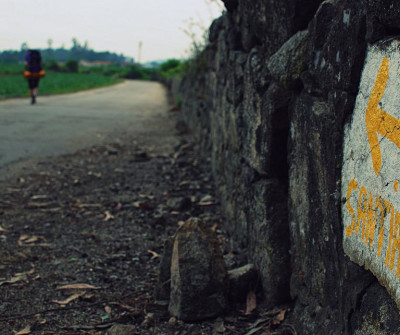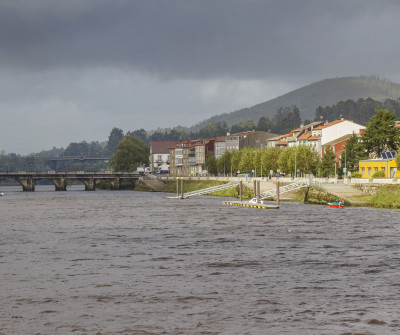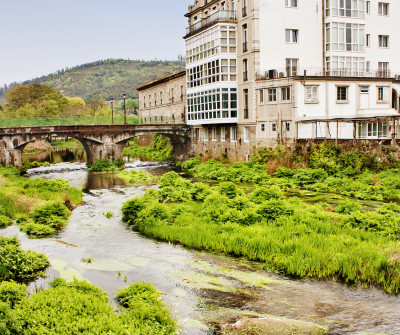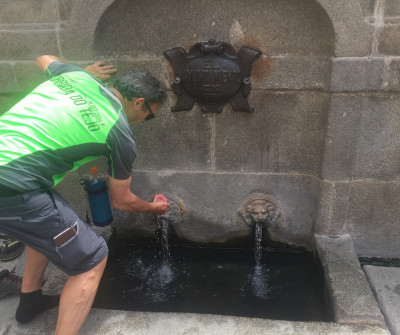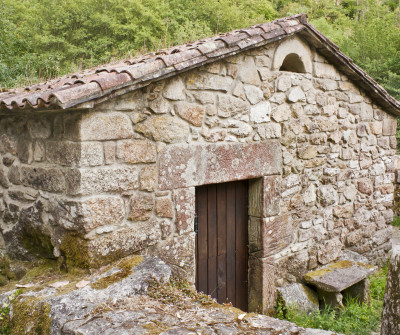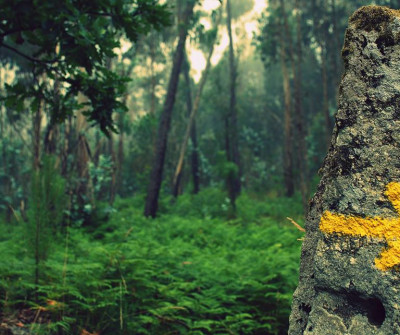The initial 4 kilometres of this section depart from Pontevedra through the bridge of O Burgo, crossing the River Lérez until you reach Alba, where you find the Romanesque church of Santa María.
READ MOREThen the Camino goes through A Portela and Briallos, going back and forth to and from the railway tracks and the main road. After you cross the river Agra, Caldas de Reis is just around the corner.
Caldas is a spa town where pilgrims may find all services and also enjoy the thermal spring waters with their curative powers, used since Roman times. When you enter the square leading to the Calle Real, the main street in this town, you will find the Roman bridge over the River Bermaño. Close by, the 18th-century spa of Dávila offers a thermal spring accessible for visitors just by the façade.
Here you may also visit several churches such as Santa María's and Saint Thomas Becket's, the only Galician church devoted to the Bishop of Canterbury, a famous pilgrim who spent the night here while doing the Camino. Besides, the River Umia is flanked by a beautiful botanic garden open to the public built at the end of the 19th century to offer some solace to the spa-goers who were being treated at the spa.
Tips from our postmen and women
What to do and see in Caldas de Reis?

“Caldas de Reis is the place where Alfonso VII, the first Emperor of Castile, was born. He was the son of Doña Urraca, whose home was in Campo de la Torre.
The Tower itself was demolished at the end of the 19th century to build the church of Santo Tomás, but you can still see some of the old windows on the outer part of the ambulatory”.
What to do and see in the Variante Espiritual?

“In the municipalities of Meis and Ribadumia, many pilgrims decide to go to the Ruta da Pedra e da Auga, a walk that runs through streams and almost 50 restored water mills upstream all the way to the Cistercian monastery of Armenteira, where there is a hostel. There are signs along the route to return to the Camino”.


 Filter
Filter